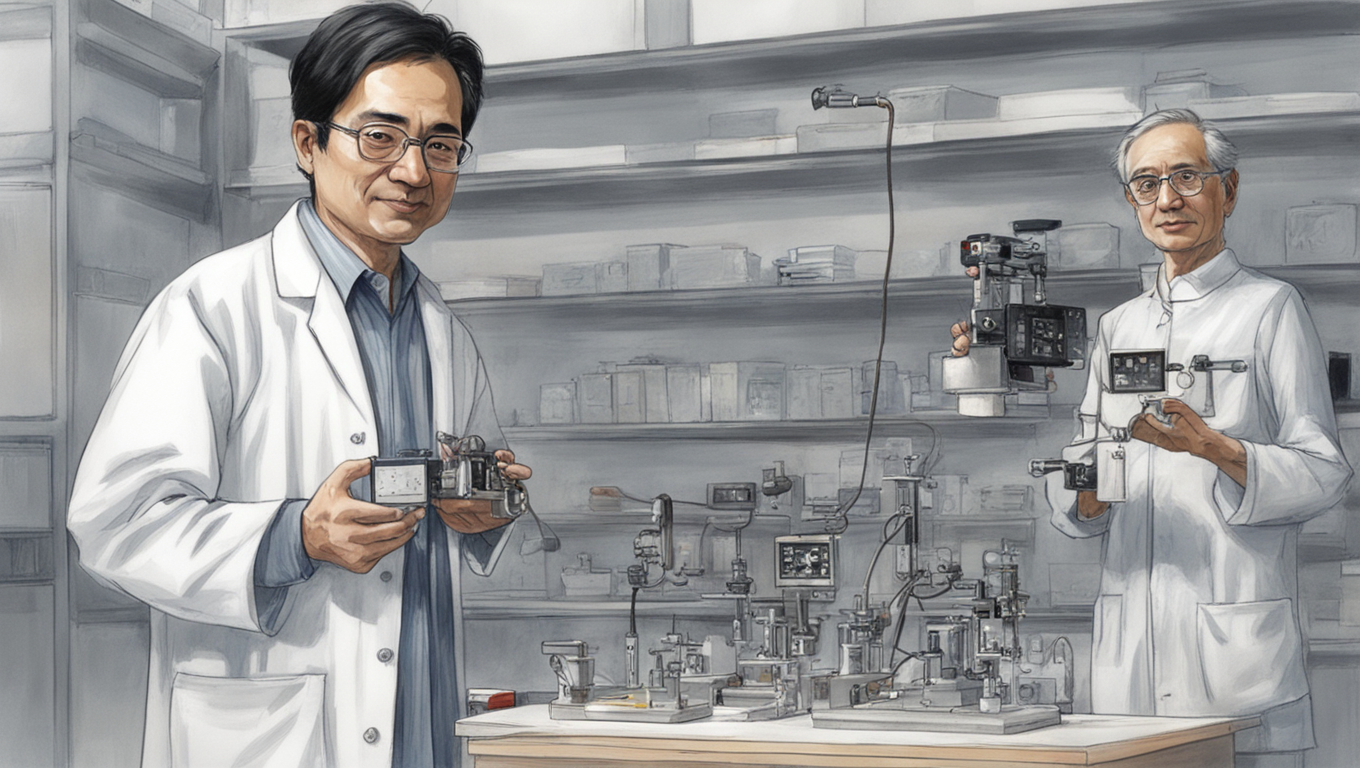In an exciting development in the field of image processing, Pakistani researcher Dr. Ali Imran and Prof. Xu Mingsheng have unveiled a breakthrough Neuromorphic Vision sensor at Zhejiang University in China. This groundbreaking device, developed in collaboration with international scientists from the State University of New York, the National Institute for Materials Science in Japan, and Sejong University in South Korea, has the potential to revolutionize the way vision sensors operate.
What sets this sensor apart is its ability to perform neuromorphic functions at the single-sensor level. This means that the device can handle tasks such as sensing, learning, memorizing, and decision-making all within a single unit, eliminating the need for separate sensors, computers, and hard disks. The implications of this integration are significant, with potential applications in fields like artificial intelligence, computer vision, and image processing.
Dr. Ali Imran and Prof. Xu Mingsheng achieved this breakthrough by developing a simple method to fabricate the HfAlO interfacial layer, which possesses ferroelectric properties. By using atomic layer deposition, they were able to create this interfacial layer and integrate it with a monolayer Graphene to form a ferroelectric field effect transistor. The device functions by absorbing light in Silicon, which then converts the optical energy into photovoltage and polarizes the ferroelectric HfAlO layer. The smart Graphene channel senses these changes and transfers the signal to the output. In this way, the continuous weak light signals can form an image pattern capable of identifying objects, digits, images, or even human faces.
What makes this device even more impressive is its reliability and long-term performance. Properly operated, it can be utilized for extended periods without degradation in its performance. This durability makes it an attractive option for industrial-scale fabrication and deployment.
The projected market size for Global Neuromorphic Computing is forecasted to reach USD 8,275.9 million by the year 2030, with a remarkable Compound Annual Growth Rate of 85.73% from 2021 to 2030. This exponential growth is driven by several factors, including the increasing demand for artificial intelligence technologies like chatterbots, computer vision, and language processing. Additionally, the application of neuromorphic computing in security and the ongoing research and development of neuromorphic chips for brain-inspired robotics and intelligent systems provide significant opportunities for market participants.
Reflecting on the importance of this breakthrough, Dr. Ali Imran stated, “I will continue making efforts to foster China-Pakistan friendship, not only in culture but also in the future of advanced technology.” He also expressed his desire for greater collaboration between Chinese and Pakistani universities, believing that a shift in the focus of research towards addressing industry problems will help solve economic challenges. Dr. Ali Imran also warmly welcomed young Pakistani researchers to China, encouraging them to pursue their dreams of conducting top-level research.
This collaborative effort between Pakistani and international researchers marks an important milestone in the field of image processing. With its potential applications in artificial intelligence and computer vision, the Neuromorphic Vision sensor developed by Dr. Ali Imran and Prof. Xu Mingsheng has the capacity to reshape the way we perceive and interact with visual data. As the world continues to advance in its understanding of neuromorphic computing, breakthroughs like this will pave the way for a future of intelligent and efficient technologies.





Use the share button below if you liked it.